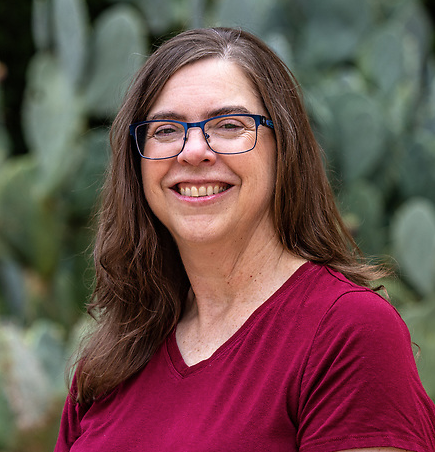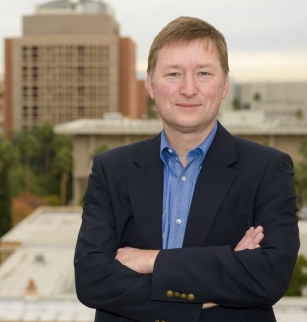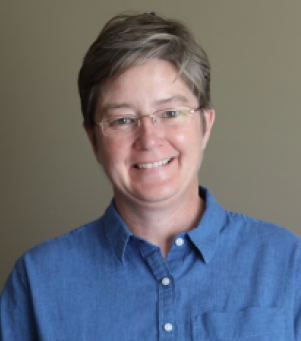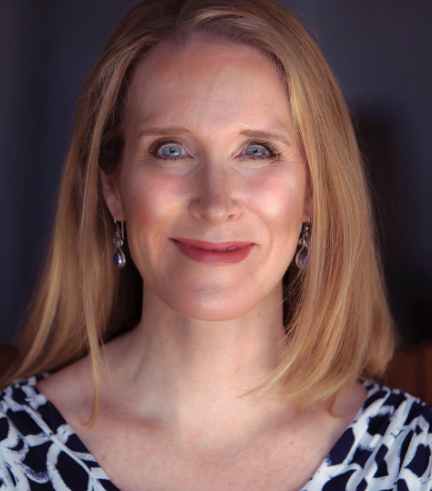The College of Liberal Arts and Sciences at Arizona State University has a full roster of new leaders, and they’re eager to welcome students.
“We are very fortunate to have high-caliber leaders starting with us this fall,” said Patrick Kenney, dean of The College. “I am looking forward to seeing their continuing contributions to our students and ASU at large.”

John Carlson, Center for the Study of Religion and Conflict
In addition to being the new director of the Center for the Study of Religion and Conflict, Carlson is also an associate professor of religious studies whose research explores how religion and moral inquiry inform the understanding of political life. His writing spans topics of war and peace, religion and violence, democracy and civic life, among other areas of interest. A major focus for the fall and beyond will be the Recovering Truth project, which will see the center partner with the Walter Cronkite School of Journalism and Mass Communication to undertake a three-year project examining religion, journalism and democracy in our current “post-truth” moment.
At the core of the project is a collaborative lab for scholars, journalists, civic leaders and students to deliberate together about the status and place of truth in democratic life.
“Religion is deeply bound up with the enormous challenges we confront in our world today, at home and abroad: the rise of nationalism in various forms; frontal assaults upon truth, democracy and human dignity; and even the insistence that human beings are masters of our fate who can save ourselves through science, technology and faith in progress,” Carlson says. “The Center for the Study of Religion and Conflict is devoted to understanding how religious ideas and practices are tied to these problems — and how religion can be part of the solutions, as well.”
Carlson is also working on plans for celebrating the center’s 20th anniversary next year.

Nancy Manley, School of Life Sciences
Nancy Manley, a world-renowned geneticist who specializes in the thymus organ and its effect on immunity and aging, joins the School of Life Sciences as its new director. Previously, she was at the University of Georgia, where she served as the head of the Department of Genetics for the last five years and as Distinguished Research Professor for the last 20 years.
"I look forward to working with Dr. Manley and I’m confident that her impressive skill set, in partnership with the School of Life Sciences community, will help advance the school’s efforts to innovate in immersive and adaptive learning, foster academic excellence, incubate transformative research and develop inclusive environments for students pursuing programs and careers in the life sciences," said Kenro Kusumi, dean of natural sciences.
Having received her PhD in biology from Massachusetts Institute of Technology in 1989, Manley’s research interests are in the fields of developmental biology and molecular genetics, and her current work focuses on the evolution, fetal development, postnatal function and aging of the thymus, the primary organ responsible for the generation of T cells.
“I feel like I’m at a point now where I want to pivot to be more outward-facing and to have an even bigger impact from what I do,” Manley says. “And I feel like being the director of the School of Life Sciences is going to give me the opportunity and the platform to really do that. Leadership is actually not about what one person does, ever. Leadership is about what you do with your team. And the team that is already in place here is very good.”
Manley is also the latest in a series of women heading STEM-related units at ASU.

David Sailor, School of Geographical Sciences and Urban Planning
David Sailor is the new director of the School of Geographical Sciences and Urban Planning. Prior to joining ASU in 2017, Sailor was a faculty member at Tulane University, from 1993–2003, and Portland State University, from 2003–2016. His scholarly pursuits include examining the intersection of climate with the built environment and working extensively on quantifying the causes of and prospects for mitigating the urban heat island effect.
Sailor’s main objectives for the school are to improve the quality of outcomes for students while simultaneously growing educational offerings. He also hopes to leverage the school’s strengths in planning, urban climate science and geospatial research to grow leadership within ASU and with community and industry partners.
“We are engaging with local communities and governments, including through direct partnership with city government offices,” Sailor says. “For example, one of our faculty has a joint appointment as an associate professor in our school and as the inaugural director of the new Phoenix Office of Heat Response and Mitigation. Efforts such as this greatly enhance our local impact and social embeddedness.”
He believes that Arizona is uniquely positioned to address the pressing environmental issues affecting the country and the world.
“One of the grand challenges facing ASU, and the Phoenix metropolitan area in particular, is that of thriving in one of the hottest and rapidly warming metropolitan areas in the country,” he says. “We have planners and urban climate scientists with deep expertise in addressing extreme heat, and community partnerships that position us to tackle these challenges and serve as a model for cities around the world.”

Rebecca Sandefur, T. Denny Sanford School of Social and Family Dynamics
Professor and sociologist Sandefur joined the T. Denny Sanford School of Social and Family Dynamics at ASU in 2019 as a faculty member.
“I came to ASU because of the values that are in the charter,” she says. “It's about excellence in teaching and research, and it's about having a positive impact on the communities that we live in and that we serve. And it was wonderful to me that there was a place where I could do my work that had those values.”
Only a few short years later, she became the school’s new director.
Sandefur, who previously taught at the University of Chicago, is also a faculty fellow at the American Bar Foundation and the editor of “Law and Society Review.” She has lived the values so important to her for more than a decade through her research pursuing a more equitable, accessible civil justice system. Sandefur is eager to welcome new students during her first academic year as director.

Sarah Tracy, Hugh Downs School of Human Communication
Tracy received her PhD at the University of Colorado and began her academic career at ASU in 2000. At ASU, Tracy has served as assistant professor, associate professor, Herberger Endowed Professor and full professor, as well as in a variety of administrative positions, including director of doctoral studies, director of The Transformation Project and interim director.
In her new role as director of the Hugh Downs School of Human Communication, Tracy will direct one of the largest communication schools in the world and administer five degree programs — which include approximately 2,000 undergraduate majors, 250 online master’s students and 50 doctoral students.
“With communication being the top skill sought by employers, our school provides the knowledge needed for students to excel in a variety of career trajectories,” she says.
More Science and technology

Science meets play: ASU researcher makes developmental science hands-on for families
On a Friday morning at the Edna Vihel Arts Center in Tempe, toddlers dip paint brushes into bright colors, decorating paper fish. Nearby, children chase bubbles and move to music, while…

ASU water polo player defends the goal — and our data
Marie Rudasics is the last line of defense.Six players advance across the pool with a single objective in mind: making sure that yellow hydrogrip ball finds its way into the net. Rudasics, goalkeeper…

Diagnosing data corruption
You are in your doctor’s office for your annual physical and you notice the change. This year, your doctor no longer has your health history in five-inch stack of paperwork fastened together with…


